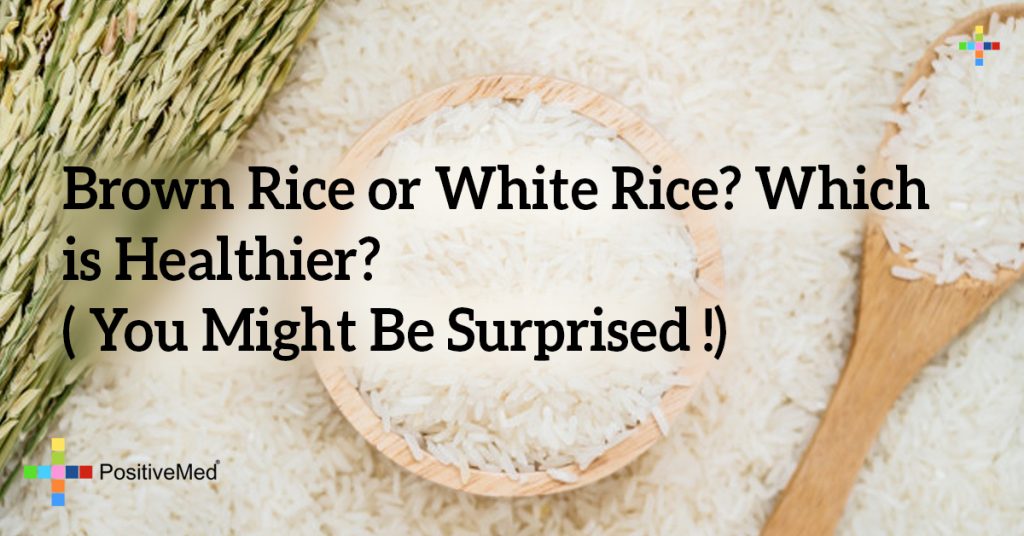
Over the past few decades, the concept of “healthy living” has gained a lot of popularity globally. Whether you attribute it to the media’s growing impact or the people’s increasing awareness, the quest for getting leaner and fitter isn’t merely confined to gym junkies or celebrity starlets any longer.
The rising popularity of high-protein, low-carb diets have earned many food types a bad reputation for giving you the identity of Mister or Miss Pudgy Pants. There are, however, some carbs that are very good for you and you must not be afraid to indulge in, guilt-free. Rice is a widely enjoyed grain, especially in the Asian cultures where almost no meal is complete without it. In South Asian cultures, rice is also widely used in religious ceremonies. Though some varieties of rice may not be the healthiest inclusions to your diet, some surely deserve a prime spot in your pantry.

Here are five healthy varieties of rice to dig into:
• Brown Rice
Whoever said eating carbs meant piling on the pounds surely never tried including brown rice in their diet! In brown rice, the processing only removes the husk, while keeping the bran and germ intact. This helps retain most nutrients and fiber contained in the rice that often get lost during processing. Brown rice contains vitamin E, an antioxidant that helps fight the formation of free radicals, thereby preventing oxidative damage that can lead to diseases like cancer.
Brown rice also contains B vitamins that play a role in reducing the risk of stroke, a study published in The American Heart Association reports. Brown rice contains 1.5 more grams of fiber as compared to white rice (per half cup). Dietary fiber helps improve bowel movements, thus aiding digestive health. Fiber also keeps you satiated for long periods, reducing your urge to binge mindlessly, thereby aiding weight loss.
• Wild Rice
Fitness enthusiasts must swear by wild rice to obtain a blend of energy and protein punch through a single meal. Wild rice contains a chock full of nutrients like potassium, folate, zinc, and phosphorus. Potassium is an essential mineral that helps regulate blood pressure levels. Folate provides anti-carcinogenic benefits and is essential in the diet of pregnant women to prevent the risk of neural tube defects in their fetus. Zinc contains immune boosting properties, and its deficiency can make the body susceptible to diseases, a study by the American Journal of Clinical Nutrition suggests. Wild rice also contains over 3 grams of proteins (per half cup) and about 1.5 grams of fiber. It has a nutty and smoky flavor.
• Black Rice
Black rice, much like brown rice contains the nutrient-rich part of rice including the bran and germ. What differentiates it from brown rice is its high antioxidant content. Black rice is rich in anthocyanins, the same variety of antioxidants contained in blueberries known to provide protective benefits against cardiovascular diseases and cancer. They are also known to reduce the risk of cognitive decline. A Journal of Agricultural and Food Chemistry study in 2010 reported that the antioxidant activity of black rice is six times that of white rice. Black rice has a nutty-sweet flavor, and it grows in China.
• Red Rice
Red rice is similar to black rice owing to the generous dose of antioxidants it provides. Red rice is rich in h3 carbohydrates that keep your energy levels high for long periods of time. Also referred to as red yeast rice, Chinese Medicine uses red rice to lower bad cholesterol levels and to increase the levels of good cholesterol. The Annals of Internal Medicine reported these findings.
• Sprouted Rice
The next time you’re feeling down the dumps, instead of grabbing that chocolate bar, serve yourself a bowl of sprouted rice. A Journal of Functional Foods study reported that germinating brown rice causes an increase in the activity of gamma-aminobutyric acid (GABA), a compound that helps improve your mood and heart health. Letting the grain germinate into a plant also helps boost its nutritional value.
Ensure that you research well on various available brands of rice before you make your purchase. Study the labels thoroughly to understand the nutritional benefits of the rice you’re looking to buy. In case of any health concern, remember to consult your doctor before you include the varieties of rice mentioned above in your diet.


Author Bio: Vineetha Reddy
Being a regular practitioner and adviser of everything related to nutrition, fitness, health, and wellness, I also have begun to write and contribute to this knowledge ecosystem. I strongly believe that the organic food you find in your pantry provides the best benefits for good health. Follow me for my best ideas and solutions: Twitter
Emerging Therapy Critiques| Stroke
How To Lose Weight In Just A Week – 26 Simple Tips| Stylecraze
Folate and cancer prevention: a new medical application of folate beyond hyperhomocysteinemia and neural tube defects| NCBI
Anthocyanins| todaysdietitian
Red Yeast Rice for Dyslipidemia in Statin-Intolerant| Annals





